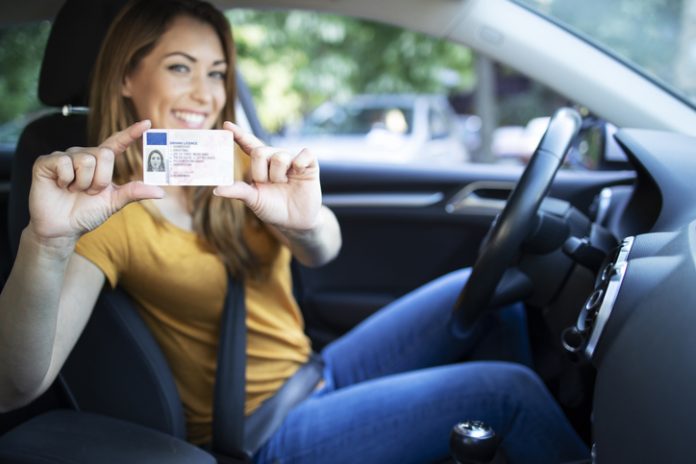Many Canadian millennials wonder if getting a driver’s license is still worth it. In the past, turning 16 and earning that piece of plastic meant freedom.
The Changing Role of the Driver’s License
Getting a driver’s license at 16 once stood as a big step into adulthood. It showed teens were ready to take on more responsibility and freedom. Back then, most young people couldn’t wait for this milestone.
It was more than just permission to drive; it symbolized independence.
Older generations, like baby boomers and Gen X, found getting their licenses crucial. They saw it as the start of new adventures and a key part of growing up. Today, some people wonder why fewer young ones rush to get their driving permits.
For them, it was clear: a driver’s license opened doors to new paths and chances in life.
Shifts in perception among Canadian millennials
Canadian millennials view driving and car ownership differently than older generations. Studies by the University of Michigan Transportation Research Institute show a decrease in young Canadians getting their driver’s license.
Meanwhile, Ontario Ministry of Transportation data reveals more people aged 25-34 are now registering as drivers, suggesting delays rather than disinterest in driving. The idea that environmental concerns lead millennials to avoid driving is largely debunked.
Emma Teitel, a millennial without a license, shares insights on this shift, highlighting how attitudes towards what defines adulthood are changing.
The rise in individuals over 25 seeking driving lessons points to anxiety around driving rather than its irrelevance. Society questions whether being able to drive should still mark becoming an adult.
This change shows that Canadian millennials prioritize different values like sustainability and technology over traditional markers of independence such as car ownership.
As city living becomes more common and public transit improves, the need for a personal vehicle diminishes, reshaping what milestones signify reaching adulthood for this generation.
Factors Influencing the Relevance of Driver’s Licenses
Urban areas see many young people choosing bikes or public buses over cars. For instance, in Toronto a 20 year old and her boyfriend find their needs met without a car thanks to nearby resources.
Houses in cities are 2.5 times more likely to skip owning a vehicle. A survey by the National Association of Realtors found that 62% of people aged 18-29 want to live where they can walk, bike, or take public transit easily.
With better city planning and public transportation systems, a driver’s license loses its charm for millennials. This shift shows how Canadian millennials prioritize convenience and eco-friendly options over driving personal cars.
Environmental concerns and the rise of car-sharing
Environmental worries push people, especially the younger ones, to pick car-sharing. Services like Zipcar show this change. This move helps cut down on pollution and reduces the need for owning a car.
Many others choose biking, walking, or public transit over driving. Dan, a 24 year old, avoids driving to protect the environment. His choice reflects a bigger trend among Canadian millennials who value the planet’s health over having a driver’s license or own car.
The Role of Technology and Alternative Transportation
Tech makes it easy to get around without a car. People now bike more, walk, or catch the bus thanks to apps on their phones.
Growing popularity of biking, walking and public transit
Many young people in cities choose bikes or public transit over cars. This shift comes as bikes, and walking offer low-cost travel without the need for parking spaces. Urban areas like Toronto make it easy to access work, shops, and parks without a car.
Households in these areas are often less likely to own a vehicle.
Public transportation improvements also play a big role. Canadians now see buses and trains as reliable options that meet their daily needs while cutting down on traffic and pollution.
With an eye on the environment and money savings, millennials favor these methods for getting around efficiently.
For those millennials who do choose to pursue a driver’s license, services like DriveTestRoutes.com offer invaluable support.
This company specializes in helping Canadians navigate the process of obtaining their driver’s license, from practice tests to route planning. DriveTestRoutes.com provides tailored resources that can ease the anxiety of driving tests, making it a reliable ally for those who see the value in having the freedom and flexibility that a driver’s license can offer.
Societal and Economic Impacts
Having a driver’s license used to open many doors for jobs and social growth especially in rural areas. Now, high costs of owning a car make it hard for some people to get one.
Now, 90% of new cars are bought by those who already own one. But for young Canadians wanting to escape poverty, owning a car and having a driver’s license can greatly improve their chances of getting good jobs far from home or where buses don’t go often.
Economic barriers to car ownership
Owning a car comes with high costs that make it tough for many people, especially teenagers. These include the price of insurance, parking spaces, and the process to get licensed. For young drivers in Canada, these barriers can feel like too much to handle.
Youth unemployment being double the national average makes it even harder for them to afford cars.
The cycle continues where only those with enough money can keep owning and buying cars, leaving many young Canadians behind due to economic challenges.
Conclusion
Driver’s licenses still mark a key milestone for many Canadian millennials, symbolizing access and mobility. Cities grow and technology changes, yet the value of a license remains.
It opens doors to jobs and broadens social horizons. Even with shifts towards green transport and digital IDs, having a driver’s license ensures participation in a wide range of activities.
Therefore, it maintains its relevance today, adapting but remaining an essential part of young Canadians’ lives.





































